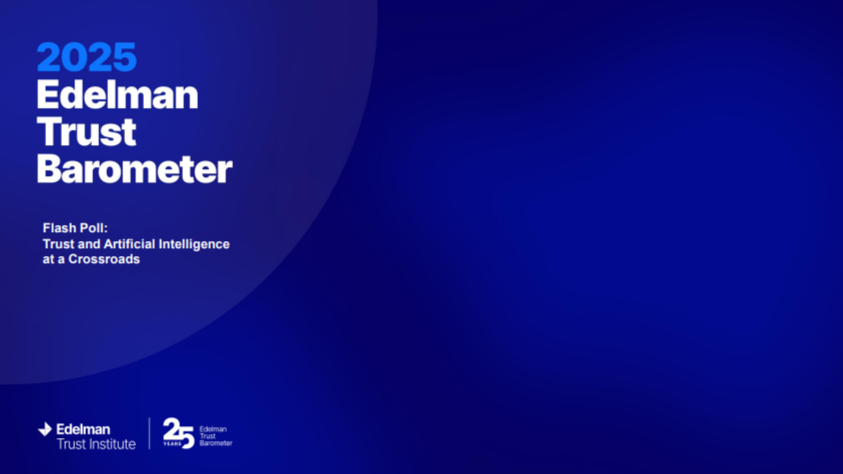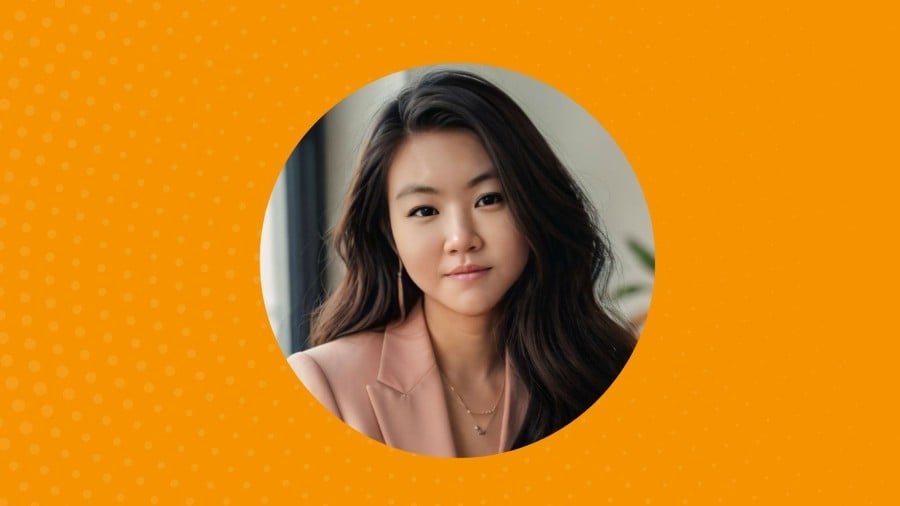Telum Media sat down with Elan Shou, CEO of Ruder Finn Asia, and Phoebe Shen, General Manager at RF Thunder, to unpack what it really takes to grow with purpose in the Southeast Asia region, from building genuine local connections to staying ahead of shifting market dynamics.
Why local depth now matters more than ever
The region’s economic growth, demographic potential, and evolving media landscape are reshaping how agencies approach their strategies and operations. For communications firms like Ruder Finn, this means a fundamental shift from managing remotely to embedding deeply within local markets.
Elan explains the drivers behind this change, “If you look at GDP growth, Southeast Asia’s markets have remained strong over the past several years. For 2025, the six key Southeast Asia countries are expected to grow between 4.5 to 4.7 per cent, significantly ahead of developed countries like those in Europe. The market size is another factor, as Indonesia is huge, Malaysia has a large population, and overall, these markets have huge growth potential.”
The region’s appeal goes beyond numbers. Elan points out that for many Chinese brands expanding abroad, Southeast Asia is a natural first stop. “It’s culturally familiar, geographically close, and home to many Chinese communities,” she says. This is reflected in Ruder Finn’s own experience, with its ‘Chinese Brand Going Abroad’ (CBGA) practice that has tripled in size over the past three years.
However, she warned against treating the region as a single entity. “Southeast Asia is a highly diverse region, with different languages, religions, market sizes, policies, and political contexts. You can’t approach it with one uniform strategy. You need local knowledge and insight.”
Phoebe echoed the sentiment, noting that the CBGA practice has been a key driver of growth. She describes their approach as a ‘one plus one plus one’ modular model - a China-based team, a Singapore hub to coordinate with Chinese clients and connect markets, and local partners who bring essential cultural fluency.
“Previously, without those local partnerships, strategies sometimes fell flat in-market. Now, involving local expertise from the start ensures relevance,” Phoebe said. “Managing from afar no longer works - we need close management and local investment.”
Evolving client expectations
Just five years ago, Southeast Asia was still considered a secondary priority compared to the Chinese market. Today, that perception has flipped with multinational corporations increasingly allocating resources and attention to the region, driven by growing consumer markets and geopolitical shifts like the US-China conflict.
Elan describes this transition: “The ‘helicopter approach’ doesn’t work here. Success depends on local knowledge, insight, and strong networks. Understanding local languages, emotions, and culture are essential.”
She also observed the rapid rise in the quality of local agencies. “Having judged various awards across Asia Pacific, I’m impressed by their quality and speed of improvement. Many local teams were trained by international agencies and are now excelling independently. This creates a more competitive landscape, requiring international agencies to raise their game.”
Phoebe, who relocated to Singapore three years ago, sees client needs evolving alongside market complexities. "Chinese clients increasingly ask for pre-entry market validation, reputation scanning, deeper localisation of content, and access to relevant local resources. In today’s fragmented media environment, reputation management is also a top request.”
Rethinking the agency model
As client expectations grow more sophisticated and regionally nuanced, agencies are being pushed to adapt - not just in services, but in structure. Historically, many international agencies in Southeast Asia operated from Singapore, setting a regional strategy from there. But that model is shifting. “In the past year, some MNCs have moved their headquarters to other countries, like Malaysia, because a Singapore-led strategy might not suit every market,” said Elan.
Looking ahead, she expects to see more country-specific strategies, which will raise expectations for local operations. “Agencies can’t just implement - they need to think and create,” she said. “Especially in consumer sectors, integrated marketing is highly market-driven and culturally oriented. Agencies must be more locally driven, even while operating at a regional scale.”
For Chinese brands, Phoebe noted, the organisational model is also evolving. "Typically, their China HQ drives vision and strategy, regional offices balance global direction with local relevance, and in-market teams execute but often need more strategic clarity. Our modular team structure mirrors this - integrating local insights into strategic planning from the start. This saves clients time and coordination costs.”
The shifting agency - media dynamics
As agencies localise their strategies and deepen their role in brand building, they are also navigating a fast-changing media ecosystem. The media landscape has changed dramatically - from traditional media to KOLs, now to KOCs. Elan emphasises the need for agencies to stay ahead of their clients in offering creative, integrated media solutions. “It’s an interactive, ever-learning process,” she says. “Sometimes clients are even ahead of agencies.”
Phoebe pointed out that media relationships in Southeast Asia are both platform-driven and trust-based. “Chinese brands often assume they can apply the same media playbook used in China, which doesn’t work here,” she said.
Looking ahead
As the communications landscape in Southeast Asia continues to evolve, Elan and Phoebe anticipate a more competitive, sophisticated communications ecosystem on the horizon. “I expect more strong local agencies and mature, creative communications professionals,” said Elan. “For example, at Ruder Finn, we’re exploring how AI can improve efficiency, freeing up time for more intelligent, creative work. The goal is to lay the foundation for communications so we can focus on high-value activities.”
For Phoebe, one of the most important shifts lies in how Chinese brands are perceived globally. “Every CBGA contributes to shaping Brand China’s global image,” she explains. “We hope to move perceptions beyond just ‘value for money,’ toward being seen as innovative, collaborative, and responsible.”
That evolution, she emphasises, requires more than just good messaging. “It means helping clients become contributors to local societies, not just foreign companies selling products.”
.jpg)
Telum Talks To: Elan Shou and Phoebe Shen from Ruder Finn Group
Telum Media creating connections
Get in touch to learn more
Noor Bahman steps up at agency
You might also enjoy
Aaron Tan has joined FleishmanHillard as Auto Practice Lead and Account Director, bringing experience across branding, communications, marketing and digital strategy.
Based in Singapore, he has accumulated more than 15 years of experience, having previously held senior roles at agencies including The Ate Group and W Communications.
In 2025, artificial intelligence sits at the centre of growing global divides. Across economies and generations, engagement with AI is revealing widening gaps in trust, understanding, and opportunity.
Chinese AI trust landscape
The 2025 Edelman Trust Barometer Flash Poll: Trust and Artificial Intelligence at a Crossroads reveals that respondents in Mainland China demonstrates high trust in AI compared to developed markets, including the US, UK, Brazil and Germany.
87 per cent of Chinese respondents say they trust AI, a figure that increased by 9 per cent between November 2023 and October 2025. This compares with trust levels of 32 per cent in the US, 36 per cent in the UK, and 39 per cent in Germany.
Strong embrace of AI adoption
High trust in AI among Chinese respondents also translates into their everyday use. 60 per cent of Chinese employees use AI weekly or more, while 49 per cent say they embrace its growing use, compared with just 18 per cent who reject it.
Acceptance is particularly strong in sectors shaping future growth. 43 per cent of financial services workers and 55 per cent of technology sector employees report embracing AI in their work, highlighting how quickly the technology is becoming embedded in professional life.
Optimism over fear of disruption
Unlike Western markets, where AI is often framed as a threat, Chinese respondents remain broadly optimistic. At least 67 per cent believe generative AI will help rather than harm society, including in areas such as climate change, work life, mental health, social cohesion, and economic equity.
Fear of economic displacement is notably low. Only 26 per cent worry that people like them will be left behind by AI, the lowest level among all surveyed markets. Even among lower-income respondents, concern rises to just 36 per cent.
A broad ecosystem of trust
Mainland China’s confidence in AI extends across all categories of AI communicators. 87 per cent trust 'people like themselves' to speak truthfully about AI, 88 per cent trust friends and family, and 85 per cent trust coworkers.
Trust in institutions and authority figures is similarly high, including 87 per cent for scientists and AI researchers, 83 per cent for CEOs, and 84 per cent for journalists and technology influencers.
More than 70 per cent of respondents are comfortable with their employer's use of AI - the highest rate amongst countries surveyed, while 60 per cent are comfortable with the media's AI usage.
Trust issues outweigh other barriers
Despite high overall trust, some barriers to AI adoption exist in Mainland China. Among infrequent users, 43 per cent cite trust concerns such as data protection, 28 per cent worry about how data will be protected, and 19 per cent are concerned about how their data will be used. Issues of motivation and access affect 40 per cent, while discomfort with technology is cited by just 15 per cent.
However these barriers are significantly lower than in Western markets, where 55 to 70 per cent of infrequent users identify trust as the main obstacle to AI adoption.
Ultimately, the Edelman Flash Poll highlights a simple point: trust shapes adoption. Mainland China’s high public confidence supports faster and broader use of AI, while lower trust in Western markets aligns with a more cautious pace. These differences underline how public attitudes influence the trajectory of technological change across regions.
Alexa Cheah has joined W Kuala Lumpur as Marketing Communications Manager. In her new role, she manages the hotel’s brand and communications efforts, including media relations, corporate communications and reputation, events, social media, as well as beverage and food marketing, working alongside the Director of Marketing Communications.
Her prior experience includes roles at Grand Hyatt Kuala Lumpur, followed by Hyatt Hotels in Malaysia, where she contributed to brand campaigns, hotel openings, and cross-property initiatives in the cluster marketing team.


